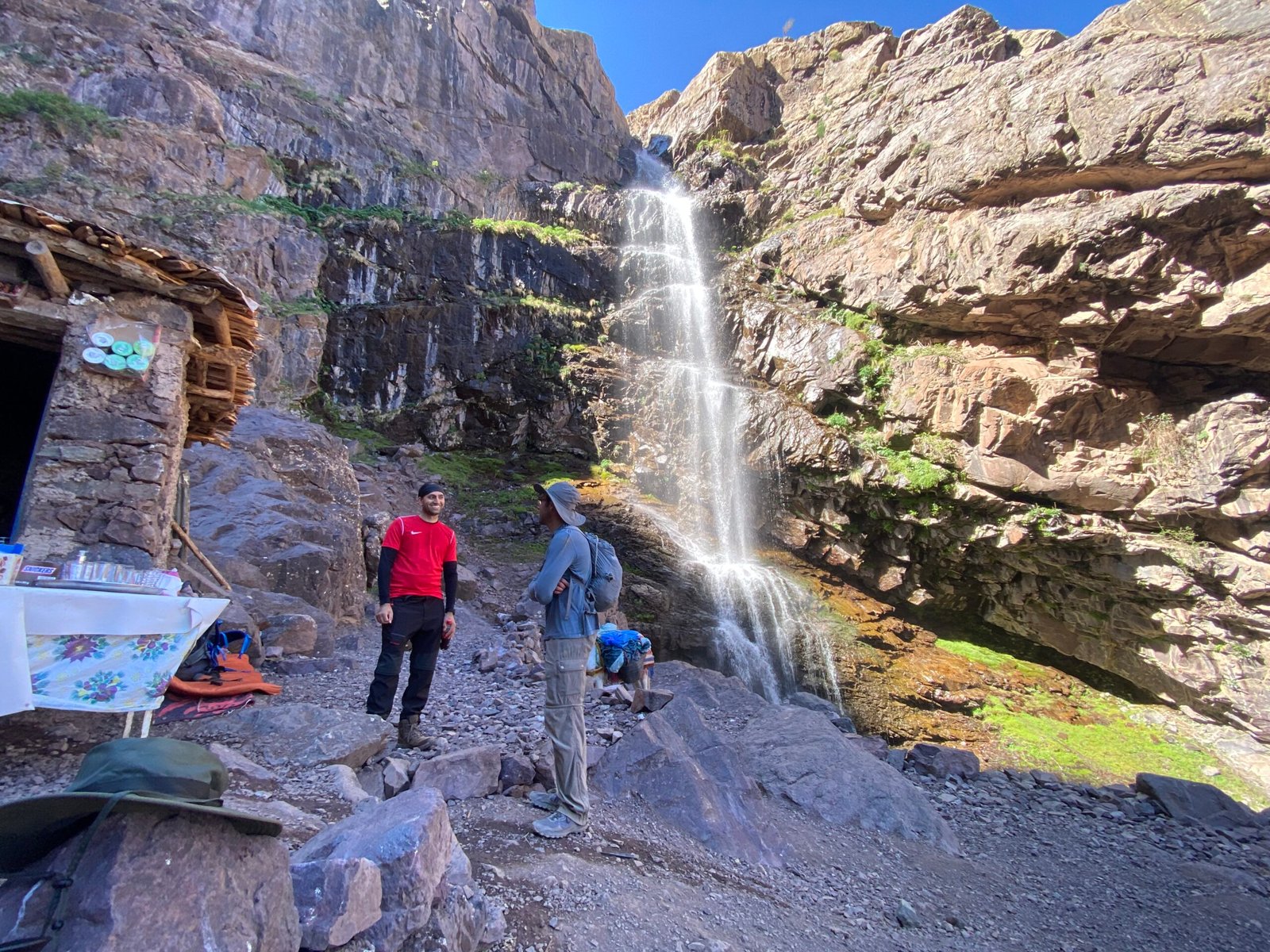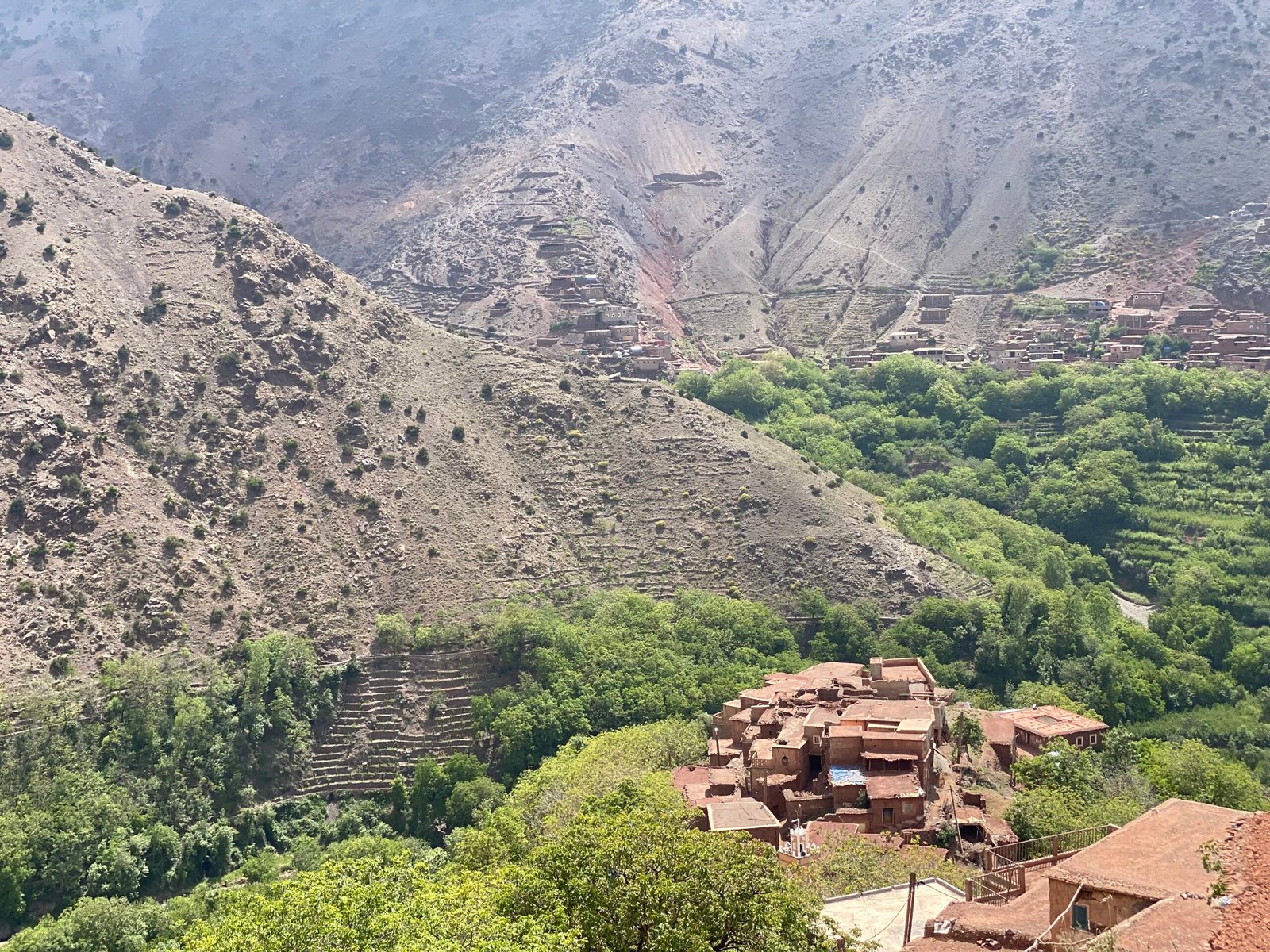Azzaden Valley treks
2 Days treks in Morocco
Treks to the Azzaden Valley, the most authentic valley of the Toubkal Massif. We climb to the pass of Tizi Ntacht at 2200m, beautiful view of the gorges of ...
Atlas Mountains Hikes
The Best Trails for Hiking in the Atlas Mountains in Morocco ; 1. Mount Toubkal. TOP CHOICE FOR ICONIC SUMMITS. Easy access to the mountain from to Marrakech.
2 Day trek Berber villages
An easy & interesting overnight trek in a colorful and authentic Azzaden valley at the heart of the Berber Ait Ouazzaden tribe.
2 DAY TREK IN THE BERBER VILLAGES
Explore the Berber villages on this trekking adventure. Start your journey from Marrakech and pass through numerous small Berber hamlets and villages until you reach the breathtaking mountains of the Western High Atlas. Along the way, you will visit the villages of Imlil, Arghen, and M’zzik. Take some time to explore a village in the Assif Aït Mizane valley, which offers stunning views of old fruit trees and vegetable fields irrigated on terraces. Continue your trek by crossing the Tiz M’zzik pass (2480 m) and descending through the junipers until you reach the village of Tizi Oussem, where you will spend the night.
On the second day, descend further into the Assif Azzaden valley, passing through several Berber hamlets. Your journey will take you up to the Tizi Oudite pass and then down to the village of Aguersiouâl. Take a break and enjoy a delicious lunch by the river before heading back up the Imlil Valley for an hour. Finally, return to the village of Imlil and transfer back to Marrakech.
Cultural Immersion: Dive into Berber culture in the charming village of Imlil, set against the backdrop of the Western High Atlas.
Panoramic Thrills: Trek to the Tiz M’zzik pass for a thrilling ascent rewarded with breathtaking panoramic views of mountains and valleys.
Juniper Descent: Descend through juniper forests to Tizi Oussem, experiencing the warm hospitality of this picturesque mountain village.
Riverside Bliss: Enjoy a riverside lunch in Aguersiouâl, surrounded by nature, offering a perfect break on your trek.
Berber Hamlets: Engage with Berber communities, passing through Arghen and Assif Azzaden valley, gaining cultural insights amid stunning landscapes.
After enjoying your breakfast in Marrakech, head towards the High Atlas mountains by passing through Tahnnaout, Oued Ghighaya, and Asni. Along the way, you will be mesmerized by the stunning views of the villages. Once you reach Imlil (65 km from Marrakech), you will meet your guide and driver. From there, start on a trekking adventure and ascend the Tizi Mzik pass (2480 m), which offers a breathtaking view of the Imlil valley and the Toubkal summit.
Afterward, continue your journey to Tamsoulte to witness the highest waterfalls in the Atlas Mountains, standing at an impressive height of 100 meters. Descend through the juniper forest in the Azzaden valley until you reach the village of Tizi Oussem. Spend the night at a guest house in the village. The trekking will involve approximately 6 hours of walking.


After eating breakfast, bask in the sunshine of this vibrant valley and its charming Berber villages. Depart from Tizi Oussem and make your way down to the village of Id Issa. Then, ascend to the Tizi Oudid pass (2225m) and pass through the village of Matat, where you’ll witness a beautiful forest of wild thurifera junipers. Take a break for lunch under the walnut trees and unwind by the river. In the afternoon, head back to Marrakech and expect to arrive around 5 p.m. The total duration of the journey is 5 hours.
What’s Included:
- Professional Mountain Guide.
- Meal.
- lodging.
- All meals are included.
- Guide, mules and staff are included.
- Transfers from and to Marrakech are included.
Waht’s not included:
- Drinks
- Tips
- Sleeping bags
- Mineral water

Believe it or not, Berber history goes back to prehistoric times. In fact, Morocco is home to the oldest Homo Sapiens ever found — nearly 300,000 years old! This means that the indigenous people of Morocco have been here for a long, long time. Longer than any other known group of people in the world. Much of what we know about the very first people of Morocco come from archeological records. Of the Berbers themselves, well, much of that history is oral. In fact, it’s probably a mistake to call them “Berber” at all!
The Berbers proudly call themselves the Amazigh, the “free people.” The name “Berber” derives from “Barbary,” that is, from the Greek barbaria. Though “Berber” is commonly used throughout Morocco, both by those who identify as Amazigh, and other Moroccans, it’s probably not the nicest or most accurate name.
Thousands of years ago, the Amazigh ruled all of North Africa, largely through different tribes. They would crisscross over the Sahara and throughout the southern basin of the Mediterranean for trade and travel. Over the centuries, they have been called by many names: The ancient Greeks called them “Libyans”;
Romans called them variously “Numbians,” and “Africans” while much of medieval Europe referred to this collection of tribes in North Africa as “Moors.” In fact, it was the Arabs who came up with the Berber name: Al-Barbar. This was likely a re-adaptation of the ancient Greek term of “barbar.” However, there is some thought, as written by the Arab scholar Ibn Khaldun, that there could have been an ancient person by the name of “Barbar,” in some texts, a mother named “Barbara,” who gave the name to the tribes, perhaps around Somalia.
When Moulay Idriss, the founder of modern Morocco, fled the Abassid Dynasty, he brought Islam with him, peacefully converting the Awraba tribe and establishing the Idrissid Dynasty. Prior to then, most Berbers across all of North Africa were Anamist, Christian or Jewish. Islam quickly spread through the region, though somewhat different than what was practiced in Middle East. Two of the greatest historic Moroccan dynasties, the Almoravids and Almohads, were Islamic Berber dynasties that ruled large parts of Spain and northwest Africa.
Over the years, the Amazigh have battled, traded, negotiated, and played host to the Phoenicians, Carthaginians, Romans, Arabs, Spanish, and French. Even though the Romans and others have tried to colonize the Berber people, they have managed to preserve their own language and culture and in reality have never been conquered!
Berber language is primarily oral in nature, although they have had their own writing system for at least 2,500 years. Sometimes hard to find, the earliest writings can be found catalogued in the small museums throughout the south. More recently, the language has been officially codified and, alongside classical Arabic, is one of the two official languages of Morocco.

